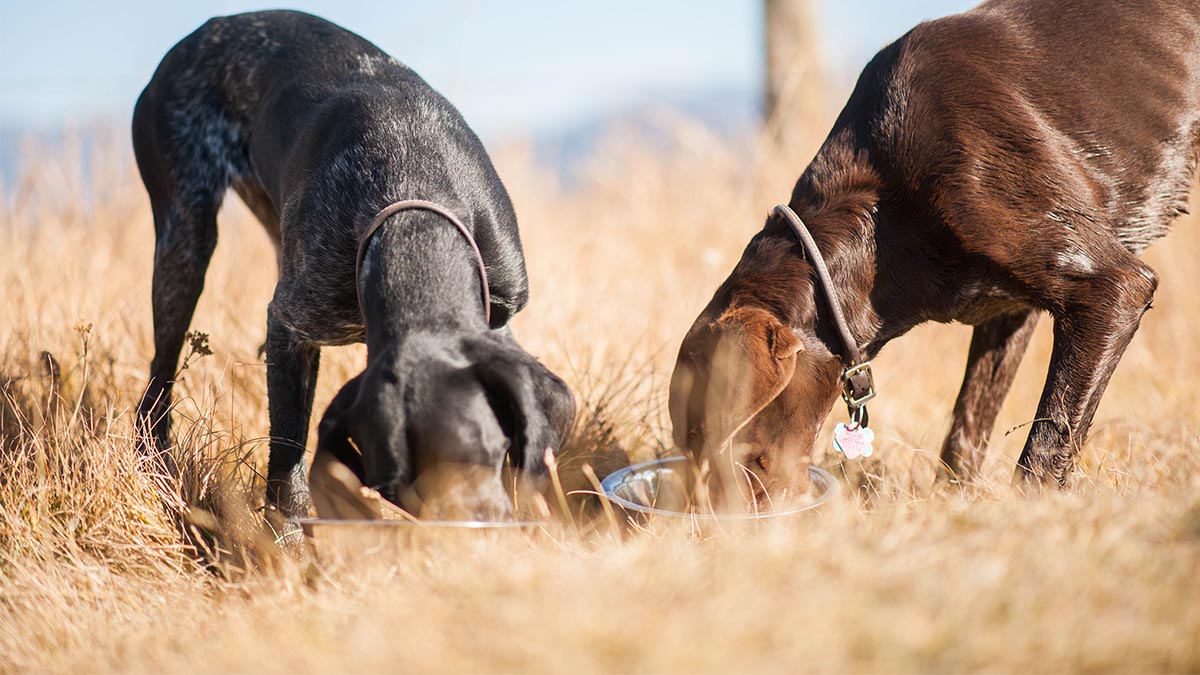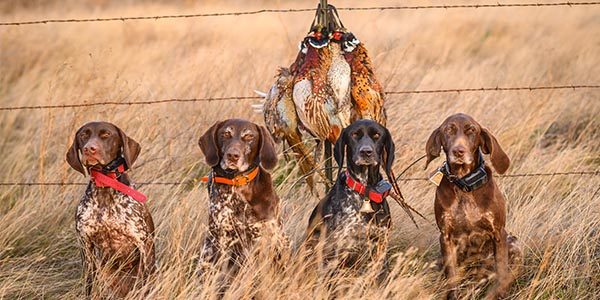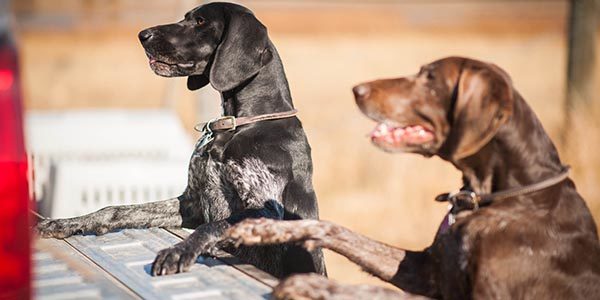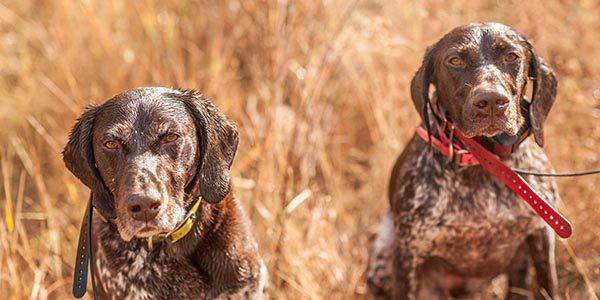
Training and fieldwork creates a special kind of bond between a dog and its owner. But our four-legged friends often find themselves in situations where they need your help. Our new Ask A Vet series delivers advice directly from a professional, working veterinarian. Have a question about your dog? Shoot an email to themeateater@themeateater.com and we’ll dig into the concern.
Much like religion and politics, canine nutrition is one of those topics where people join the discussion with a well-established set of opinions, but generally aren’t open to hearing what others have to say. The internet is awash in misinformation concerning dog food. Alternative facts and seductive marketing mask poorly-made diets. It’s no wonder bird dog owners reach out for clarity when it comes to feeding their hunting companions.
Primarily, I’m a hunter who supports an outcome-driven feeding program for your pup’s specific nutrition requirements (as well as your personal preferences as an owner). I’m also a veterinarian who leans heavily on what science suggests is the best way to feed a bird dog.
If you’ve come here looking for support for raw or grain-free diets, you’ll be disappointed. I’m not a fan of either for several reasons, particularly when it comes to the energy and nutrition needs of serious working dogs. Raw diets carry an increased risk of food-borne illness, and many home-brewed raw recipes lack the proper balance of micronutrients that working dogs require. Carbohydrate substitutes in some popular grain-free commercial diets have been linked to a recent spike in cases of heart disease and should not be on the menu for hunting dogs.
However, as a vet, I’d rather work with clients to keep dogs in top shape than engage in a philosophical battle over dog food. Like you, I also have my own bird dog feeding habits and personal preferences. Occasionally they fly in the face of convention. At the end of the day, we all want healthy dogs that hunt hard, and there’s more than one way to achieve that goal.

Performance Kibble Options
Bird dogs metabolize an incredible amount of energy in an all-day hunt, with some research suggesting that serious working dogs (sled dogs, in this study) burn more than 12,000 calories per day at maximum exertion. While that staggering figure sinks in, attempt to wrap your head around how many cups of dog food (at 350-500 calories per cup) you’ll have to pack on a week-long hunting trip out West.
If you’re using a commercially-made, performance dry food, you’re off to a great start in offsetting what will inevitably become a negative energy balance as the bird season grinds on. These diets pack a hefty dose of energy in a small package and remain tempered enough in their nutrients to allow for scaled back feeding in the off-season.
They’re also readily available at retailers around the country and shelf-stable to withstand the rigors of a bird hunting road trip in harsh conditions. Keeping up with the raw tripe and Bolivian quinoa diet you found on the Internet could be problematic during opening weekend in South Dakota. Access to quality ingredients might be limited and the risk of food-borne illness increases as you struggle to keep perishable goods at a safe temperature.
Bird dog owners refer to these performance diets collectively by their high protein and fat percentages (usually listed on packaging as 30/20 or 28/18), built into the formula. I feed all of my dogs these diets, even my French bulldog—albeit in a much smaller quantity. While the detractors wail about grains and fillers, I applaud the thorough research and testing done by the larger pet food companies (Purina, Eukanuba, and a few others) that prove their performance diets do what they claim.

Bird hunters often ask me about supplementing their dry food for extra calories, usually in the form of added fats. Bacon grease seems to be a perennial fan favorite. I tell them you typically don’t need to add other sources of fat to your on-the-road feeding protocol. The risk of gastrointestinal distress, like vomiting, diarrhea, or even pancreatitis, from a gut bomb of butter, oil, or bacon is fairly high. Diarrhea is a quick route to dehydration in a bird dog.
Utilize the feeding guide on the bag of food to establish a baseline quantity of kibble for your bird dog. Each brand varies in calorie density, making a one-size-fits-all approach to feeding impractical for different breeds, sizes, energy levels, and calorie demands.
Your goal should center around maintaining adequate body condition (or at least minimizing weight loss) in the peak of hunting season. For weekend warriors, your dog may require no additional food above the bag’s recommendation to stay in shape. In my own dogs, weight loss becomes a serious issue late in the season when our hunting outings become more frequent and temperatures drop. I usually double or triple the quantity recommended. Check in with your vet to gauge your progress or if you have specific concerns about determining your dog’s energy requirements.
But I’m still human, as well as a hopeless sucker for the begging of a hungry dog that just poured their heart and soul into their work. I’ve been known to let my dogs clean my plate when we’re on the road hunting. I’m willing to accept the risks.
Those performance dog foods require no electrolyte supplements or vitamins (actually, they’re not recommended). The exception I make is the addition of a probiotic to help keep my dogs’ immunity high during stressful travel and to stabilize their gut microflora while they sample the tasty morsels of who-knows-what scattered around the prairie.
Timing is Critical
Timing of feeding plays a large role in how efficiently your pup is fueled for hunting, in addition to the quality of the food. The accepted science behind canine nutrition has shown that the best time to feed a bird dog is immediately after they have returned to a resting state following exercise.
Their unique physiology allows for optimum utilization of fats and proteins when consuming a large meal while their engine is still warm from the hunt.

The research also shows that fasting them in the morning prior to the hunt is ideal. For one, there’s no excess food in the gastrointestinal tract to promote abdominal pain or contribute to a risk of bloat. Secondly, pre-hunt food has the potential to divert vital oxygen-carrying blood away from muscles to assist in digestion.
Without getting derailed by the physiology behind this, I’ll freely admit that there would be a mutiny if I denied my dogs at least a small breakfast the morning of a hunt. Science suggests doing otherwise, but I also like to slip my pups some snacks when I break in the middle of a long hunt. A big meal would be counterproductive in maintaining their performance, but a small snack seems to boost their mood without any noticeable negative impact on output. My dogs sure look at me like I’m their hero when I offer up the last bite of my sandwich or an apple core.
Kibbles for Thought
Honestly, I spend much of my energy as a veterinarian attempting—mostly unsuccessfully—to convince owners to feed their dogs less food. Amid a pet obesity epidemic of our own creation, I consider it a rare treat when the opportunity arises to discuss in earnest how utilizing nutrition can maximize the performance of your bird dog.
This is especially true on multi-day hunts where adding or maintaining weight is our goal rather than an obstacle. There’s incredible satisfaction in watching our dogs perform and knowing we’re able to play a large part in fueling those mind-boggling feats of athleticism.




Conversation